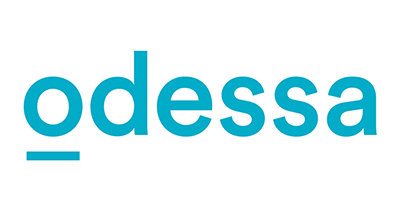
Companies should take a “think big, start small, scale fast” approach as they incorporate the Internet of Things into their operations, says Anthony Casciano, president and chief executive officer of Siemens Financial Services. He explains why this involves driving IoT from a business case, not pushing a technology into operations simply because of its fascinating potential.
“By not investing in IoT, businesses put themselves in danger of falling behind today’s industry standard and risk becoming obsolete."
The Internet of Things, known as IoT, is a network of interconnected objects and systems that produces data. The real-time information it shares allows businesses to secure a competitive advantage through improvements in productivity and efficiency, as well as insight into customer needs.
With data shared by the IoT, companies can determine how the performance of one object impacts another, and better measure and manage company operations across the entire enterprise.
IoT has many applications, ranging from data about how customers use products and services, to predictive maintenance in rail operation, management of energy usage, and factory floor optimization. For example, real-time information delivered from sensors can reveal usage patterns that can change the way business is conducted.
Research has shown that while many businesses identify the growing importance of leveraging IoT and digitalization in daily operations, few have started to incorporate it.
Out of approximately 750 executives polled by Siemens and Harvard Business Review, 74% of respondents said they believed IoT will be a competitive differentiator, yet only 36% said they are using it in their core operations.
Modernizing existing operations and implementing change management processes stand as the two biggest barriers to adopting IoT. However, embracing IoT and the digital transformation can lead to many benefits and competitive advantages.
Modernizing existing operations and implementing change management processes stand as the two biggest barriers to adopting IoT. However, embracing IoT and the digital transformation can lead to many benefits and competitive advantages.
In fact, by not investing in IoT, businesses put themselves in danger of falling behind today’s industry standard and risk becoming obsolete.
IoT helps companies create new customer-centric business models for their products.
Previously, industrial business models centered around selling customers on the value that a product provides over its useful life. This is still an important component of business models today, but the way that value is being delivered is changing due to the growth of “industrial consumerism.”
Companies today need to focus more on the customer experience attached to the product being sold. This is how the company differentiates itself from its competitors, and consumer experiences have a large influence on expectations in the B2B world.
As they increase their investments in IoT, companies will have to prepare themselves for the threat of cyberattacks.
Despite the value that IoT can provide, connecting machines and equipment to cloud-based platforms makes companies susceptible to online attacks. Given the increasing threat of cyberattacks and data breaches in today’s technological world, companies and investors must be flexible and comprehensive in their due diligence when considering acquisitions.
Proactively prioritizing cybersecurity and implementing detailed incident response plans are essential steps businesses should take.
Companies should take a “think big, start small, scale fast” approach as they incorporate IoT into their operations.
This involves driving IoT from a business case, not pushing a technology into operations simply because of its fascinating potential. Digitalization is a key competitive advantage for all businesses to stay successful and relevant in the minds of consumers and end users. IoT has already set sail, and companies must make an investment and drive business models that create consumer value in order to stay afloat.
* Anthony Casciano is president and chief executive officer of Siemens Financial Services, Inc. He also leads its IoT strategy in the US. This article was first published by Siemens. You can see the full article by clicking here.

